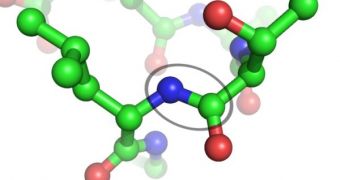The first known genetic regulatory protein, the lactose repressor protein, was discovered as far back as 1966, but it was only recently that the tools of biochemistry became sophisticated enough to allow for it to be investigated thoroughly. Behind the research were experts at the Rice University (RU), who discovered that the shape of proteins, in general, and their structure determined their function. Furthermore, the proteins are highly flexible. The discoveries are detailed in this week's issue of the respected journal Proceedings of the National Academy of Sciences (PNAS).
“It's become increasingly clear that many proteins are highly flexible and able to form different types of structures when they interact with something else, often another protein or DNA. That's true for lactose repressor in binding to DNA, making it a good candidate to learn more about the process of DNA looping because it's a relatively simple and well-studied protein,” the RU Stewart Memorial Professor of Biochemistry and Cell Biology, Kathleen Matthews, who has also been the co-author of the new PNAS paper, explains. She started studying the lactose repressor protein almost four decades ago.
“Our findings are important, but there is clearly more work to be done. We've found that limiting flexibility indeed limits protein function in this case. Now we need to apply our methods more broadly to see if this applies in other cases as well. We are also very excited about the dawn of single-molecule biophysical methods being applied inside living cells. Interdisciplinary approaches at the edge between physics and biochemistry are proving very powerful, and the months I spent at Rice were a blast,” Francesco Vanzi, a visiting professor at RU, from the University of Florence, in Italy, adds.
The experiments discovered that the lactose repressor was, in fact, a V-shaped bacterial protein, resembling two arms held together by a central hinge. At the tip of each arm, there is a structure specialized in grabbing and holding DNA. But each of the arms can only bind to a specific type of the nucleic acid. When both of them make contact, they essentially form a DNA loop, which means that the genes in the immediate surrounding are inactivated. As its name suggests, the lactose repressor inactivates genes related to the production of enzymes used to transport and metabolize lactose in bacteria.

 14 DAY TRIAL //
14 DAY TRIAL //